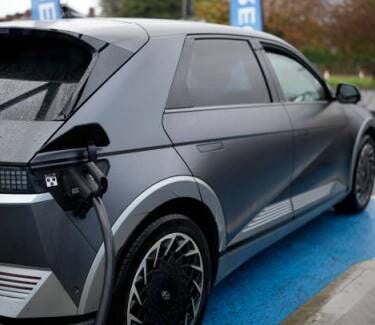The matter of automakers removing AM radios from electric vehicles continues to garner national attention following Senator Ed Markey (D-MA) asking the heads of 20 major car brands to detail their plans for AM radio in their vehicles. The New York Times ran a story on the topic on Saturday while cable news network NewsNation’s “Morning in America” aired a segment on it Monday morning. Automotive trade pubs have also devoted space to the issue.
The Times coverage of the issue offers both sides of the debate – automakers saying that the electromagnetic interference caused by electric motors causes inferior AM radio reception and noise; and AM broadcasters decrying the loss of their prime location for radio listening.
“It’s a killer for us because most of our listening audience is in the morning drive and afternoon drive, when people are going to work and coming from work — and if we’re not there in their car, we’re nonexistent,” Ron January, Operations Manager at Courtney French Broadcasting urban contemporary WATV Birmingham, AL (900) told the Times.
Fears AM could fall by the wayside have percolated in radio for years. But as more auto brands introduced electric vehicles into the market, the new technology has caused high interference levels with AM radio reception. Rather than adopt a fix that has been developed, some automakers have said they will simply stop putting AM in their dashboards. Among them are Audi, BMW, Porsche, Tesla, and Volvo. Volkswagen no longer offers AM radio in its electric ID.4 SUV and Ford has announced that AM radio will not be available in its 2023 Ford F-150 Lightning all-electric pickup truck.
According to Nielsen, 20% of radio listeners tune to AM radio – the percentage varies significantly from market to market – and the AM audience skews older. But not all young people have tuned AM radio out. “AM is where you get the information,” Alex Cardenas-Acosta, a 34-year-old who works at an auto repair shop in Union, NJ, told the Times. “I don’t think it should be taken away. If you want to find something serious, instead of all that crap they have on FM, you turn on AM.”
Brian Winnekins, principal of Durand Broadcasting, which owns “Reel Country” WRDN Durand, WI (1430), was quoted by both the Times and appeared in the NewsNation segment. Winnekins said his station is encouraging listeners to communicate their unhappiness about the situation directly to automakers. “If we're paying tens of thousands of dollars for a vehicle that can drive itself, you should be able to put in a decent quality AM/FM receiver for free over the air radio so that we don't have to have a subscription service to be able to listen to our local radio stations,” Winnekins said in the TV segment. “And we're trying to do it from a standpoint of consumers saying, ‘Look, we don't accept this, and we want this in our vehicles.’”
Winnekins pointed to recent research from the National Association of Farm Broadcasting that found 71% of farmers listen to agricultural radio and noted that local AM stations broadcast high school sports games and provide coverage of local news and community events.
Central to Markey’s argument to automakers is that AM radio is relied upon as a “crucial, cost-free source of news, sports, and weather,” especially during emergencies, natural disasters, and extreme weather events. That point is reinforced in the Times story by Diane Newman, Operations and Brand Manager at Audacy news-talk WWL-AM/FM New Orleans (870, 105.3), which, as an AM-only outlet, held its community together in the wake of 2005’s devastating Hurricane Katrina in a performance that earned it accolades from the mass media to Washington. “There was no Wi-Fi; there were no phone connections,” Newman said. “You take away AM radios in cars and you take away a lifeline, a connection when the community needs you most.”
In his Dec. 1 letter to automakers, Markey urged they keep AM radio right where it has been for decades as a matter of public safety and national security. “Broadcast AM radio, in particular, is a critical mechanism for government authorities to communicate with the public during natural disasters, extreme weather events, and other emergencies,” Markey wrote in the letter to the automakers. He pointed out that AM radio’s ability to travel long distances is well-suited for broadcasting emergency alerts, that the Federal Emergency Management Agency has been spending millions of dollars to upgrade those stations and make them more resilient to extreme weather and other hazards.
Markey has asked the chief executives of the car companies to go on the record about whether they have any plans to drop AM or FM from future vehicle models. Markey is also asking the companies to explain whether they’re using any technology that addresses the interference faced by AMs in electric vehicles.

